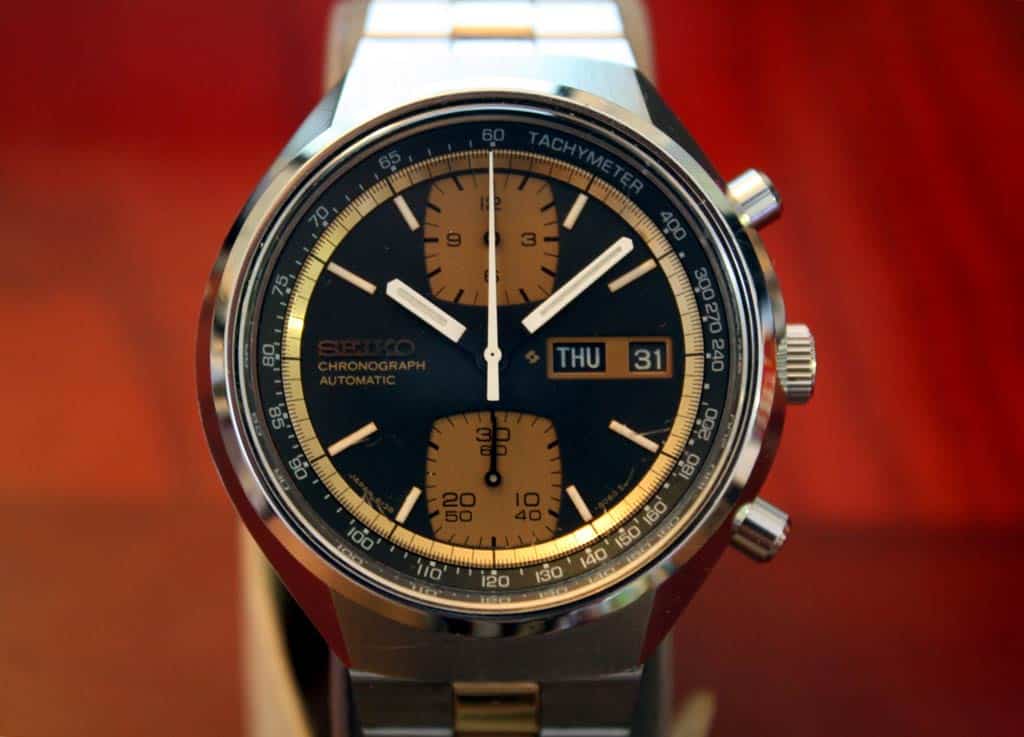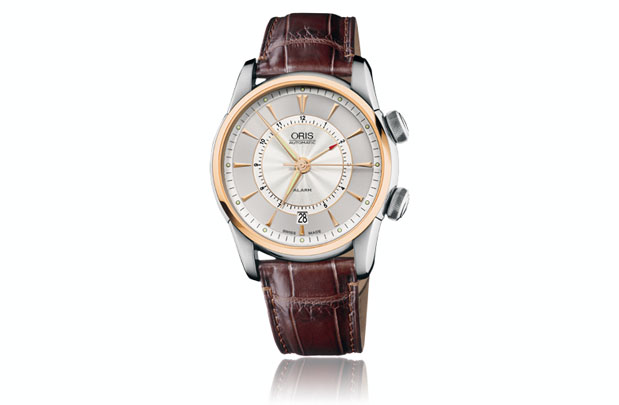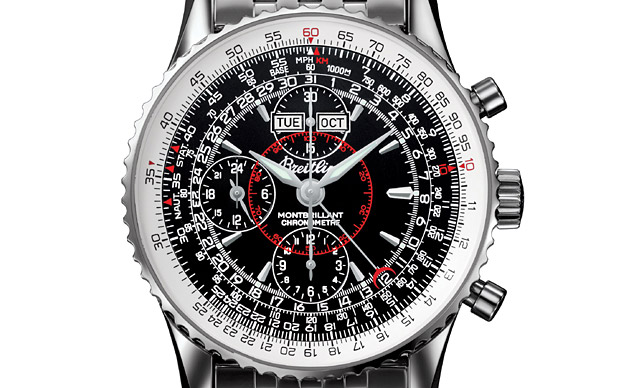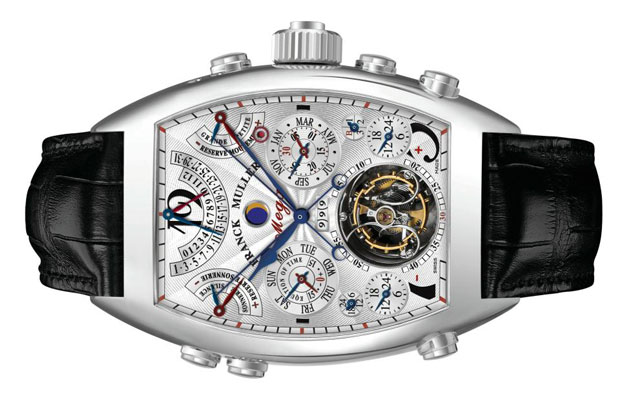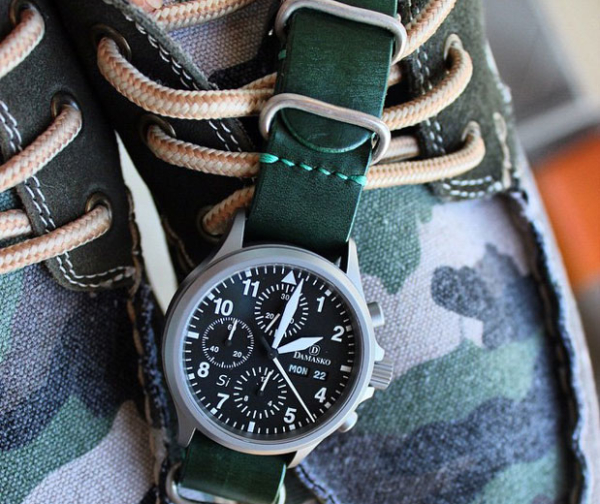This week’s question is: After hours, minutes, and seconds, what are your two most favorite functions/complications?
Let us know your answer in the comments, and if you have an idea for a Round-Table question, please email it to us for consideration!
James Enloe
When it comes to additional complications there are always two that are at the top of my list. The first is the chronograph. I’m a sucker for a good chrono. It’s not a matter of necessity either, but nicety. It’s just nice to have. I can time my commute for testing different routes; time the dryer cycle; how long it takes to drive to my folks place; anything that I can assign a time value to I will.
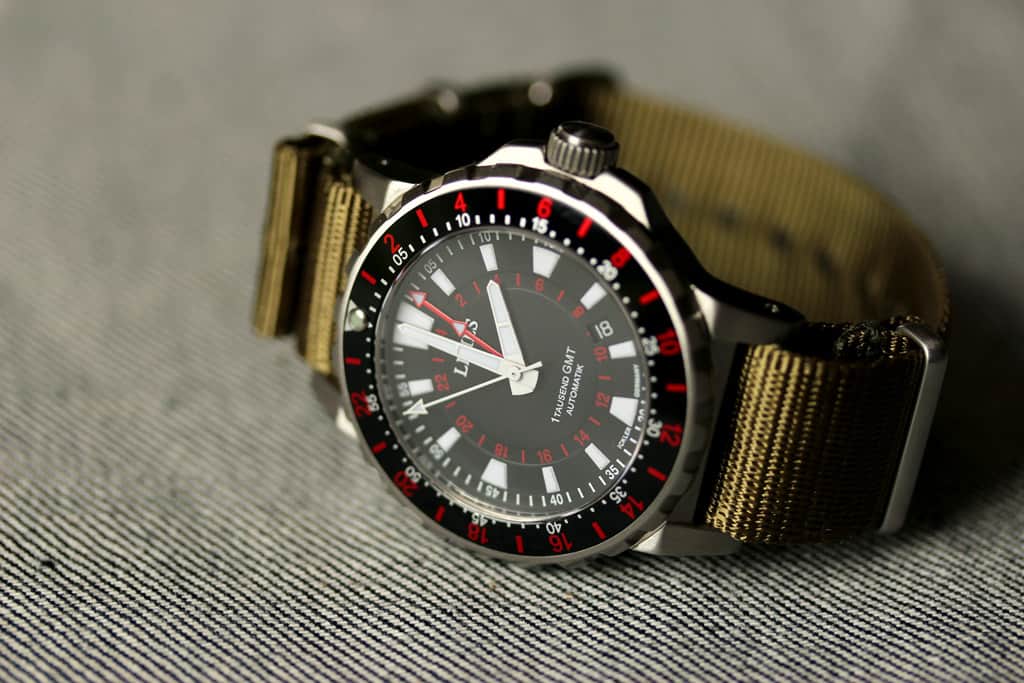
A close second is a GMT or dual timezone watch. I used to travel a bit for work and the second timezone feature was always useful for that. But even without travel I have family in two other time zones and tracking that is always, well, mostly just fun. Again, nicety over necessity. If you combine those two functions (like in my Alpina Startimer Chronograph GMT) I’m sold for sure.
Sean Lorentzen
Complications to me are a huge part of what makes watches interesting. Every watch I own (except for one, a mid-40s dress Tissot), has at least one complication, and the engineering involved in creating additional functions in a mechanical watch fascinates me. The two most interesting to me, however, are for me at least the most useful- day/date complications and chronographs. The reasoning behind day/date is simple enough, it’s always nice to have on hand if you’re dating a document, scheduling the week ahead, and so on. In terms of sheer utility, day/date is by far the best choice in complications.
Chronographs, on the other hand, still fill a useful purpose, but play to my interests much more. As those of you who’ve seen my Watches and Formula 1 series here will know, I come from an automotive and racing background, and chronographs are an integral part of the history of both racing and horology. Having a chronograph on my list lets me play out some of my fantasies- for example, every day of my last year of college, I’d strap a chrono to my wrist and drive the 8-mile winding hill road between my home and campus. Checking those “lap times” up and down the hill became something I looked forward to every morning, and one of the highlights of my year. So naturally, chronographs rate very high on my list of complications as well.
Watch Curmudgeon
Around 20 years ago, I bought a very classically styled Gerard Perregaux that just happened to have a power reserve display. At first, I just viewed it as nothing more than a nice bit of dial ornamentation. But then I started looking at it. And it grew on me. For some stupid reason, I began to love knowing my remaining spring tension. Now I have three power reserve watches, two of which are automatics. Superfluous? Yep! Belt and suspenders? Yep! But this is the one function I want after hours, minutes, and seconds.
My second favorite function is not what many W&W writers will undoubtedly choose as their favorite. And that would, of course, be a chronograph. I have several of these, and I love them dearly. Yeah, they look great and make a dude appear as a sporty sort. But, honestly, I never use the function. Those tiny hands and registers just sit there waiting to time a sporting event, a parking meter, or even an egg. Never happens!
So, my second favorite function isn’t a chronograph. Or a GMT. Or a moon phase. Or an equation of time. Or…..yadayadayada! It just happens to be an alarm function. Yes, I love alarm watches. They look great, sound great, and are actually quite useful. Unfortunately, they’re not too easy to find, and new ones tend to be costly. Tudor has a nice one. Oris has a real beauty. Vulcain has a few that are just so so. And, if I’m not mistaken, Breguet and Blancpain have them, as well. However, for what those cost, you could employ someone full-time to buzz in your ear.
There’s another function that I’m partial to that nearly beat out alarms as my second fave. It’s the indispensable depth gauge. I view this as a necessity, especially in these times of radical climate change. At one moment you could be basking in the sun; a second later you could be beneath a wall of water, and it would be freakin’ helpful to
know your precise depth.
Ed Estlow
After hours-minutes-seconds, I’d have to say my favorite complication is a chronograph. After all, I own four mechanical chronos (an Omega Speedmaster, a Tutima Flieger F2, a Breitling ChrnoAvenger, and a Breitling Montbrillant Datora), and two quartz chronos (Seiko and Citizen) (I know, I know… last week I said I had no interest in quartz. I acquired these two before I acquired mechanical watch syndrome – and I love them severely).
But thinking about this further, it occurs to me that the other complication I find most useful is indeed a date function. Now, a date function is so common it almost isn’t even considered a complication.
But the ones I like aren’t the normal window at three o’clock. No… I like the big dates. And that’s exactly what my Montbrillant Datora is. But it’s also known as a triple date. That is, it’s got day and month in windows flanking twelve o’clock, and a forked hand pointing to the date of the month in a chapter ring around the edge.
If you’re going to have a date complication, you might as well get as much as you can afford, right?
Which of course, leads to one of my grails of watch collecting – a perpetual calendar (damn… it’s a slippery slope). That’s what I’ll go for when I make my first $Million.
Christoph McNeill
My two favorite complications would have to be the chronograph and the power reserve. Chronographs are not only beautiful to look at, but they are actually a useful complication (imagine that!). How else can you properly time your parking meter or steaks on the BBQ?? Aside from being useful, a chronograph function definitely adds value and desirability to a vintage watch. Vintage chronographs are like a fine wine, getting better and more expensive with age. My other favorite complication would have to be the power reserve function. While not really actually must have info, it is cool to be able to see just how much time you have left before having to wind your watch. Some brands have come up with some unique ways to display the power reserve, like the rotating discs of the vintage Longines Conquest PR, really giving them a great look.
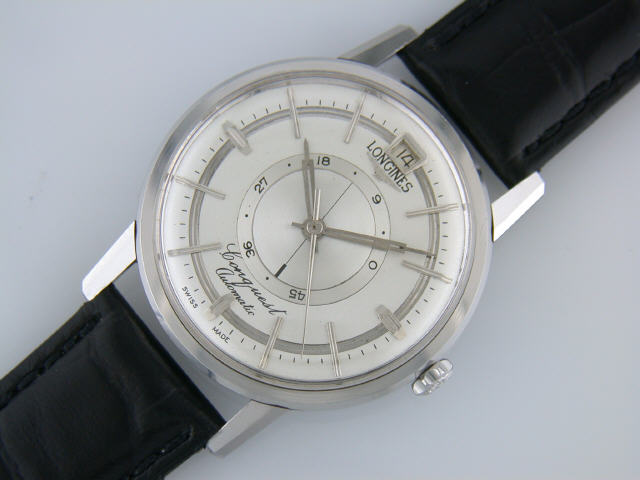
Li Wang
I don’t even need a date window, but I love a countdown timer even if it’s digital. My favorite style is a 12-hour marker rotating bezel with markers for the first 15 minutes so it functions as simple GMT function and a minute countdown for, well, cooking steaks to medium rare. Not many watches feature the 12-hour bezel markings, and one I would like someday is the no-longer-in-production Marathon SAR, which also comes in a regular dive bezel insert. Unfortunately, the used market prices on these are ridiculous to me. The MKII Paradive with no-date and a 12-hour bezel would also be a very nice addition.
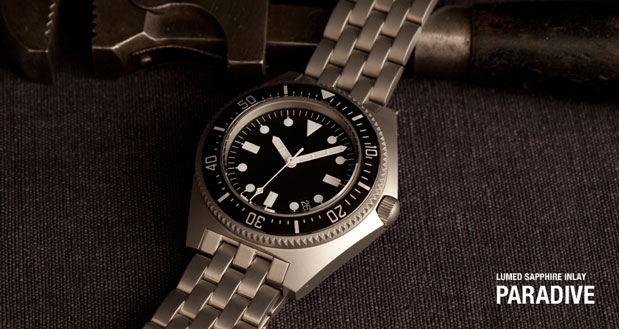
If I’m working out, the digital countdown timers on my G-Shock GW6900 is tremendously useful for intervals, timing rest between sets and any other meathead task.
Zach Weiss
The first is easy for me, I love chronos in general, they being the focus of my personal collection, but my favorites are ones with central minutes. These are rare beasts as the movements they used have long since been retired. Namely, there was the glorious Lemania 5100 (a.k.a. the Omega 1045) which is in the Speedmaster MK 4.5 I cherish, as well as the Sinn 156b I recently acquired and the Tutima NATO I used to have. Then the Lemania 1340, which Omega modified to have a stacked 24-hr hand at 9 and called the cal. 1040. There were some others out there as well, though those are the most well known.
Anyway… I find in practice, having the minute about the center is vastly preferable than on a sub-dial, and having it on a 60-minute rotation is preferable to 30. Sinn, Tutima, Damasko, Nivrel and Bell&Ross all currently produce, either with their own in-house modules or via Dubois Depraz (well, the Damasko is in the works), watches with central minutes chronos, though they often cost far more than vintage 5100’s.
The other is a feature I actually have to yet have in a watch in my collection, central pointer date. If you read my review regularly, you know that I often get annoyed at dates (I know many of you do to). Though I like the function, they occasionally are placed oddly on the dial, disrupting the dial’s layout and throwing off balance. Central pointer dates get around this by moving the date to the outer edge of the dial. Though it might make everything busier, I am a fan of how they look. My personal favorite, a watch that is high on my list, is the Wakmann triple-date Chronograph, powered by the Valjoux 723/72c.
Mark McArthur-Christie
I had a rummage through the watchbox before writing this and discovered something. I’m a bit simple. Even my quartz watches (which are legion) are embarrassingly uncomplicated. Even the gnarliest – my atomic G-shock – boasts only a mediocre world timer, chrono, timer and a couple of alarms. The mechs all just stared at their (very few) hands and looked a bit ashamed – a GMT here, a flyback chrono there and, er, that’s it.
In fact, now I think about it, I’m not really very sure about complications. The frighteningly talented watchmaker, Franck Muller, has managed to shoehorn 36 separate ones into his Aeternitas Mega 4. I’m not even sure I can even think of that many. I mean, I’d sit and gaze in sheer awe at the north-face-of-the-Eiger-without-a-rope watchmaking in that movement for days. But apart from the horological genius behind it, I’m a bit nonplussed.
Then there are some complications that are just annoying. The JLC Duomètre’s foudroyante waves its stuttery second hand at you in a distracting, ‘look at me’ kind of way like that kid in class who always knew the answers. Minute repeaters make me check the floor for dropped teaspoons. If I need to know which phase the moon is in I’ll find a werewolf and ask him – that smiley ‘man-in-the-moon’ face just looks cheap.
Believe me, I ‘get’ and hugely admire the watchmaking, I just don’t want my watches cluttered up with stuff. So, if there’s a gun to my head, I’ll take a chrono and a countdown timer, ta. That’ll do me. Any more and you might as well buy a Bristol 411 and paint it pink.
Brandon Cripps
Take a look at my watch collection and you’ll immediately know my favorite complication: the chronograph. 2-register, 3-register, fly-back, center-seconds, I love them all. The original magazine ads for the Hamilton Chronomatic asked, “Is $200 too much to pay for years of winning rallies, timing free falls, and perfect 3-minute eggs?” Good question, Hamilton! For me the answer, now as it would have been then, is “NOPE!” Even though I’m closer to the 3-minute egg cooking side of the spectrum and have never raced in a rally in my life, those old racing chonos do it for me more than any other watch. Call me when you need your eggs timed.
I consider my second favorite non-time complication a bit of a challenge to watchmakers: the date. Now, I don’t mean that it’s a technical challenge – it’s probably the most easily achieved complication you can put in a watch after the time – I mean it’s a design challenge. The design of a date display on a watch can win or lose a watch for me. When well thought-out (e.g. Helson Spear Diver, Nomos Tangente Datum), the date works perfectly with the rest of the dial and helps the whole dial look good. Executed poorly (e.g. basically any watch with a floating horizontal date somewhere between 3:00 and 4:00 and in a color that doesn’t match the dial), the date stands out like an afterthought, an ugly little mistake on the face of the watch. Do a date display well, and I’m a fan. A fan who will probably buy your watch.
Ilya Ryvin
My favorite complication, hands down, would have to be a chronograph. Now, I’ll be completely honest, I don’t use the function too often except for the occasional desire to time the length of a subway ride or when cooking an egg. My love for chronographs is almost purely aesthetic. I adore what a chronograph does to a watch dial, with it’s little counters and subdials filling up what would otherwise be dead space. Sure, some chronos can be a bit busy/much, but a well-designed one is truly a work of art. Now if they weren’t so damn expensive to get serviced.
My second favorite complication is a power reserve. Now, it’s really only useful on certain watches, like those powered by a hand-wound movement (though I guess it’s of some use for those of us sitting behind desks all day with automatics strapped to our wrists). And I only really like the look on dressier pieces. But what a power reserve does aesthetically to a dial, if properly integrated into the design, far outweighs even the utility of the complication. Like the subdials of a chronograph, a power reserve indicator can help balance out a dial and can liven a design that may otherwise seem a little bland. One of my favorite watches of all that I’ve owned was an Orient 60th Anniversary hand-wound with a power reserve indicator, and I’m still kicking myself for selling it.









 Featured Videos
Featured Videos





